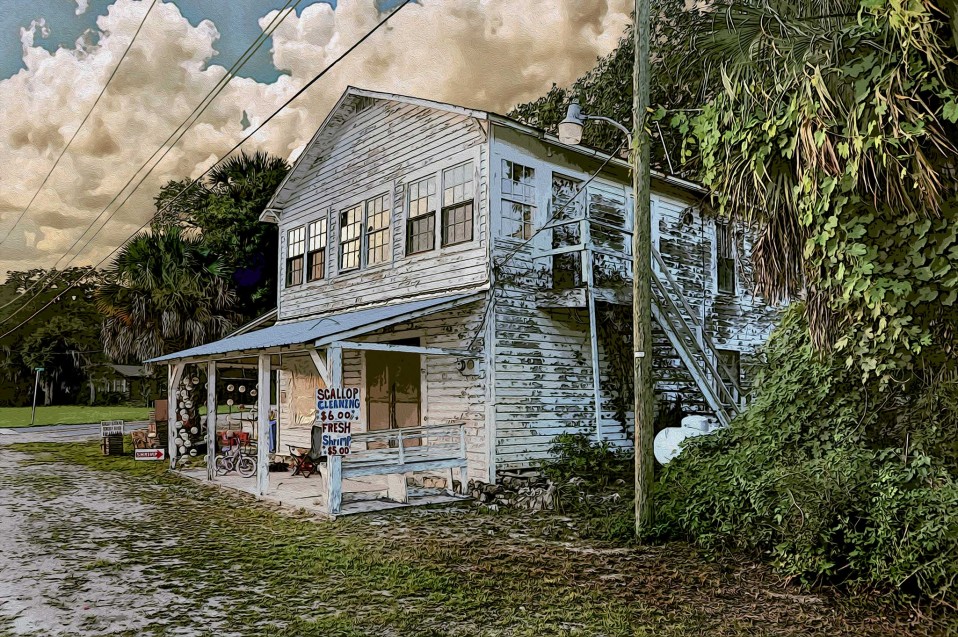Just beyond the small fishing community of Steinhatchee, the Steinhatchee River flows into the Gulf of Mexico creating Dead Man’s Bay. The isolated bay in Dixie and Taylor counties was on Spanish maps in the early 1500s, and I’ve heard two different versions of how it got its name. One is that the Spanish likely lost a sailor there. Another is that when the Spanish arrived, there had been an Indian war and Native American bodies were seen floating in the bay. Although Native Americans were living here as early as 12,000 BC, it was the tribes fleeing into Florida from the American colonies and territories that called the place “Esteen hatchee” meaning “river of man.” (Today it’s pronounced “Steen-hatchee.”) Besides Spanish, British, French and American sailors frequenting the area for centuries, it was also something of a pirate’s cove from the 15th through the 18th century. Then came the loggers, determined to strip North Florida of its virgin stands of Long Leaf Pines. And then it was the spongers who settled into the region starting in the 1930s. Until the 1950s, when a disease wiped out the sea wool sponge, it wasn’t uncommon to see 50 to 100 sponge boats moored on the Steinhatchee River. While small farms and fishing in the area were mainstays, the illegal drug trade also made its mark on the fishing village at the turn of the last century. Back in the day, “The Road to Nowhere” just outside of town was reputedly built with county funds to accommodate drug planes. Today the place is primarily used by commercial fisherman bringing in blue crabs, black mullet, and shrimp. Tourists are also a growing market. While families pull in their fair share of scallops from the bay, recreational fishermen also find fabulous catches in the bay and further off shore. I know it isn’t possible, but something about this old house overlooking the river makes me think it saw it all.
Small: 12” x 8” – $140.00 | Medium: 36” x 24” – $240.00 | Large: 32” x 48” – $430.00


